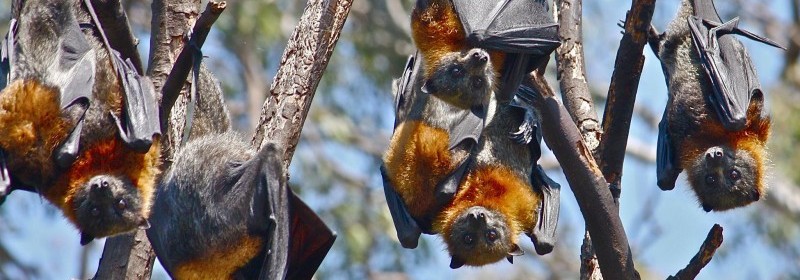Warming adds to pressure on bats

Across the world, bats are in trouble from climate change – not only through collisions with the wind turbines that are intended to mitigate its effects, but from what the increasing warmth does to their ability to find their prey.
Bats often get a bad press, portrayed as disease-spreading bloodsuckers. In fact, they perform a vital role as pollinators, seed dispensers and as controllers of pests.
Many bat species – there are more than 1,100 types of bat, ranging from the large flying fox with a wing span of up to five feet to the minuscule Kitti’s hog-nosed or bumblebee bat − are under threat.
Population decline
In eastern and central regions of the US and in several provinces in Canada, millions of bats have died as a result of a fungal disease called White-nose Syndrome. In some areas, bat populations have declined by 80% or have even vanished since the disease was first identified in 2006.
The impact on agricultural production could be severe. It is estimated that, in terms of insect suppression alone, bats save the US agricultural industry billions of dollars each year.
The fungal disease has also been reported in north-eastern China, and in parts of Europe.
Although much remains to be learned about bat behavior, there are indications that changes in climate can affect populations.
Most known bat species employ calls and echoes to acoustically navigate, hunt and communicate. Known as echolocation, this sensory system can be so sophisticated that some species can identify various insect types through the differing sounds of fluttering wings.
However, the nature of sound and the speed at which it travels is influenced by humidity, wind and heat.
“Global warming can directly affect the prey detection ability of individual bats”
While much is still unknown about how alterations in climate might affect specific bat populations, a study by researchers at Germany’s Max Planck Institute for Ornithology, published in 2013 in the UK’s Royal Society journal Interface, suggested that the delicate system bats use for foraging for insects could be disrupted, with different species reacting to rises and falls in temperature.
“The prey detection ability, and thus possibly the foraging efficiency, of echolocating bats is susceptible to rising temperatures through climate change,” the study said.
“Global warming can thus directly affect the prey detection ability of individual bats and, indirectly, their interspecific interactions with competitors and prey.”
Other studies indicate that extreme weather events could threaten whole bat populations.
Warming temperatures could result in bats waking early from hibernation. And bats are considered more vulnerable to dehydration than most other mammals: in drought conditions, they might not be able to fly long distances to find water sources.
Negative impact
Wind turbines – seen by many as a way of lessening dependence on fossil fuels, and so helping in the fight against climate change – are also believed to be having a negative impact on bat populations.
Large numbers of bats have been found dead at the foot of wind turbines, and various studies have tried to find out why they seem susceptible to collision with the turbine blades, and yet are adept at successfully navigating away from other objects.
Among the common concerns about wind power is the theory that bats could be subject to what is termed “barotrauma” – disorientation due to changes in air pressure caused by the turning of the turbine blades.
Researchers are looking into a number of possible solutions, such as siting wind farms away from known bat population centers, or employing a variety of deterrents, ranging from electromagnetic radiation to ultrasonic “boom boxes”.
Source: Charlie Hearst; CNN

 Print
Print